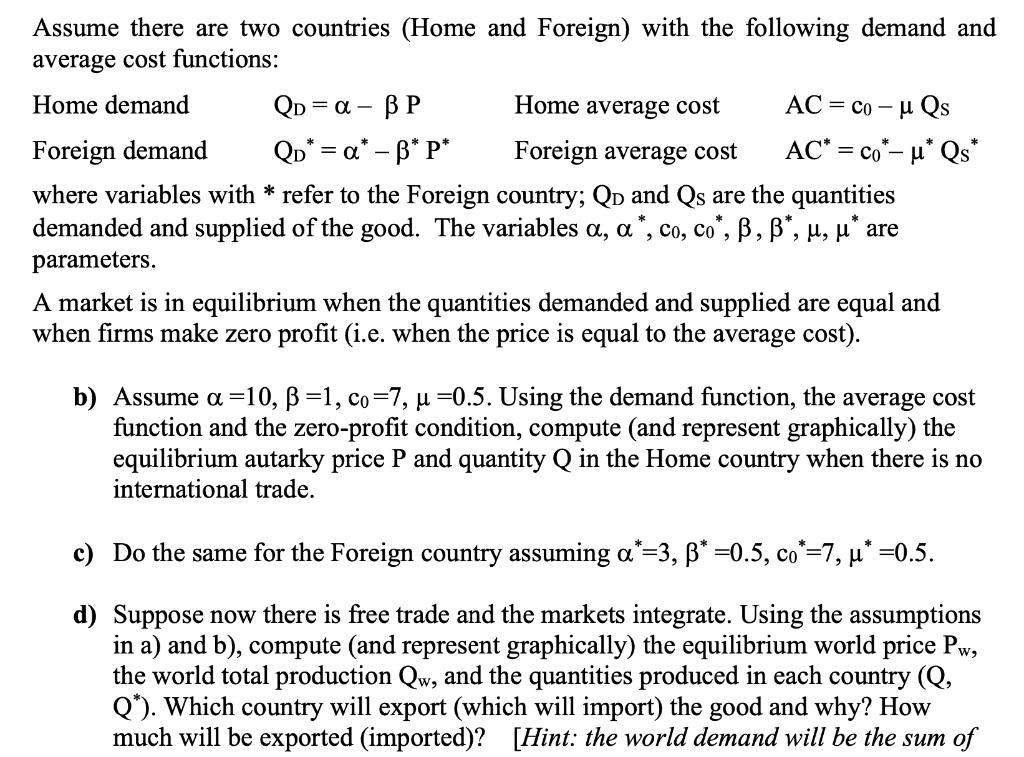Answered step by step
Verified Expert Solution
Question
1 Approved Answer
Assume there are two countries (Home and Foreign) with the following demand and average cost functions: Home demand QD = a - BP Home
Assume there are two countries (Home and Foreign) with the following demand and average cost functions: Home demand QD = a - BP Home average cost AC = Co - Qs AC* = co*- * Qs* Foreign demand QD* = a*-* P* Foreign average cost where variables with * refer to the Foreign country; QD and Qs are the quantities demanded and supplied of the good. The variables a, a, co, co*, B, *, , * are parameters. A market is in equilibrium when the quantities demanded and supplied are equal and when firms make zero profit (i.e. when the price is equal to the average cost). b) Assume a = 10, p=1, co=7, =0.5. Using the demand function, the average cost function and the zero-profit condition, compute (and represent graphically) the equilibrium autarky price P and quantity Q in the Home country when there is no international trade. c) Do the same for the Foreign country assuming a =3, * =0.5, co=7, * =0.5. d) Suppose now there is free trade and the markets integrate. Using the assumptions in a) and b), compute (and represent graphically) the equilibrium world price Pw, the world total production Qw, and the quantities produced in each country (Q, Q*). Which country will export (which will import) the good and why? How much will be exported (imported)? [Hint: the world demand will be the sum of the two country's demands, i.e. at each price the total quantity demanded is the sum of QD and QD*. This new demand curve has a kink at Pw 6; Consumers from all countries will buy where it is cheaper] e) Let's maintain the assumptions in a) but change the data in c) by assuming demand is the same but the cost function changes so that co*=3, * =0.2. How much is produced in Foreign under autarky? Characterize the free trade equilibrium as in d), and briefly explain how and why it differs from the equilibrium in d).
Step by Step Solution
★★★★★
3.37 Rating (163 Votes )
There are 3 Steps involved in it
Step: 1
a The equilibrium autarky price P and quantity Q in the Home country when there is no international trade can be calculated by setting the demand and average cost functions equal to each other and sol...
Get Instant Access to Expert-Tailored Solutions
See step-by-step solutions with expert insights and AI powered tools for academic success
Step: 2

Step: 3

Ace Your Homework with AI
Get the answers you need in no time with our AI-driven, step-by-step assistance
Get Started




